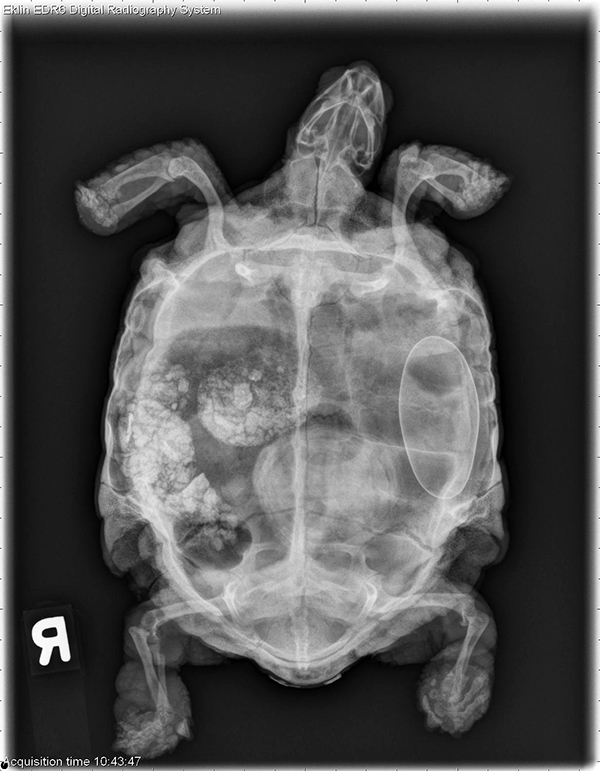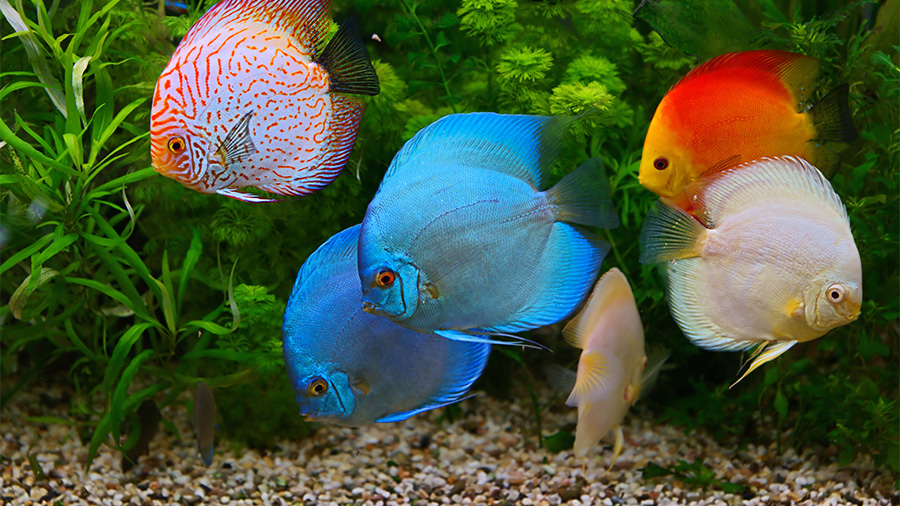If you’ve got the time—and the space—we may have a lifelong animal companion for you: a tortoise.
Here with a primer on pet tortoises is Dr. Amanda Wong, a veterinarian completing a three-year residency in zoological companion animal medicine and surgery at the University of Illinois College of Veterinary Medicine in Urbana. She addresses the basics of tortoise health care and husbandry.
Tortoise vs. Turtle
What’s the difference? Tortoises are designed for living on land, whereas turtles are better suited to spending quite a bit of time in the water.
“Some physical differences include the shape of their feet and shells. Tortoises have broader feet, like an elephant, and turtles tend to have webbing between their toes. Tortoises have a broader shaped shell whereas turtles’ shells are more streamlined for swimming,” says Dr. Wong.
One exception to that rule is the box turtle, which has a more tortoise-like appearance.
The most common pet species are the red-footed tortoise (like the one in the photo above, enjoying the outdoors and natural sunlight), sulcata tortoise (or African spurred tortoise), Hermann’s tortoise, Russian tortoise, and Greek tortoise.
Growth and Husbandry of Tortoises
Growth is dependent on the species for tortoise. For example, adult Russian tortoises range from 5 to 8 inches in length. Sulcatas can get up to 30 inches long, and the males weigh more than 100 pounds. Tortoises take a long time to mature, reaching their full size around 15 to 20 years of age. As they grow, tortoises shed individual scutes (pieces of their shell).
“Potential owners should be prepared to provide adequate space for a full-grown tortoise,” Dr. Wong advises, “but more importantly must be committed to caring for these reptiles throughout their very long lifespans. For instance, red-footed tortoises can live at least 50 years with proper care, and sulcatas can live as long as 80 years.”
Tortoises should be given as much space as possible, ideally having both indoor and outdoor enclosures. According to Dr. Wong, the minimum recommendation for indoor space is 1.0 square meters per 0.1 meter of the length of their top shell. Tortoises can be excellent at digging, so bury fencing around their outdoor space one to two feet underground.
As with any reptile pet, environmental conditions are extremely important. Owners should pay close attention to temperature, humidity, UV lighting, and photoperiod, meaning how much light they get during each day.
“Even though tortoises are terrestrial, they need access to water and may require regular soaking or baths to stay hydrated,” says Dr. Wong.
What to Feed a Tortoise
Species-appropriate diet is crucial for having a healthy tortoise. In general, all tortoise species are herbivores. This means that, depending on species, the diet may consist of grasses, hay, greens, and flowers. There are a variety of pelleted diets available commercially, and owners should investigate the ingredient list to ensure it is appropriate for their individual tortoise species.
Consult with a veterinarian who is knowledgeable about reptiles for guidance in an appropriate diet for your tortoise. To find a veterinarian that is comfortable working with tortoises, visit the Association of Reptile and Amphibian Veterinarians website and use the “Find a Vet” feature.
Veterinary Care

The best way to prevent illness in your tortoise is to make sure it’s getting an optimal environment and diet.
“Tortoises should visit a veterinarian at least annually for a complete physical examination, including bloodwork, fecal testing, and sometimes X rays and other imaging,” recommends Dr. Wong.
(If you’re wondering how exactly those 100+-pound sulcatas arrive at the clinic, Dr. Wong says: “Owners usually wheel them in on a cart or balanced on a skateboard, which is easier than having multiple people carry them!”)
Tortoises are great at hiding illness. That’s why owners should pay close attention to subtle changes in behavior, temperament, appetite, activity level, or elimination. Such changes could indicate an illness. Common tortoise illnesses include:
- Bone disease arising from poor husbandry and diet
- Urinary stones
- Fungal infections originating from the environment or other tortoises
Tortoises also may experience trauma, such as dog bites or getting hit by a car. If the shell becomes damaged, shell repair may be possible depending on the extent and nature of the injury. Another health problem is obstruction of the gastrointestinal tract. (Dr. Wong says they like to eat rocks!)
Hibernation
During the cold season, some species of tortoises will hibernate. “Hibernation can affect your reptile’s appetite,” says Dr. Wong. “If you are unsure if your tortoise is not eating due to illness or hibernation, take your tortoise to a reptile veterinarian for an assessment.”
However, for the species of tortoise that do not hibernate, allowing them to slow down during the cooler months would be a significant health risk.
By Crystal Munguia

![[red-footed tortoise]](https://vetmed.illinois.edu/wp-content/uploads/2022/01/rftortoise.jpg)


